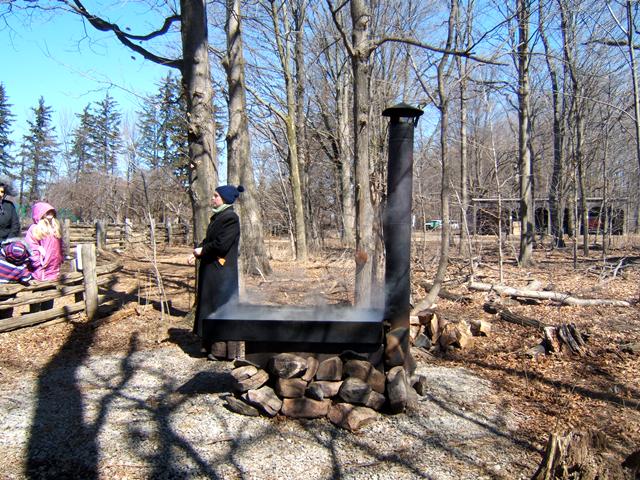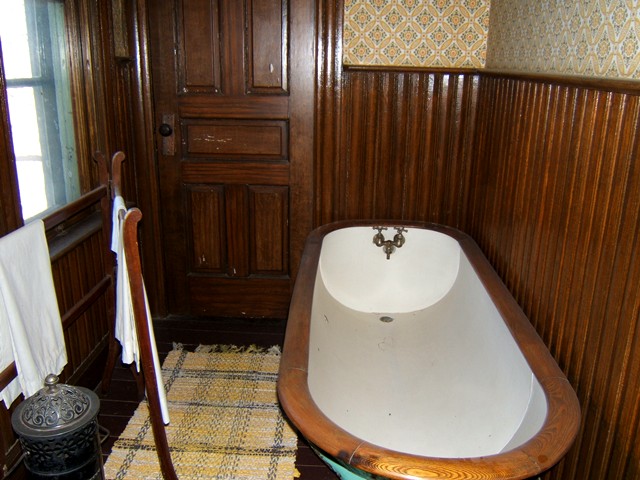One early March Saturday morning, when spring was almost there, we were on our way to the Bronte Creek Provincial Park to enjoy a truly Canadian tradition – the park’s annual Maple Syrup Festival. Through the whole winter, keeping sweet memories of delightful pancakes with pure maple syrup, we’ve been waiting patiently for this special time of the year.
Maple syrup making

Maple syrup was first collected and used by the indigenous peoples who recognized maple sap as a source of energy and nutrition. They showed the arriving European colonists how to tap the trunks of certain types of maples during the spring thaw to harvest the sap. The practice was adopted by European settlers, who gradually refined production methods. Although maple syrup can be made from different maple species, only three of them – sugar, red and black maples – are the best to make the syrup.

Before the winter, maple trees store starch in their trunks and roots; the starch is then converted to sugar that rises in the sap in late winter and early spring. The trees can be tapped by drilling holes into their trunks and collecting the exuded sap, which is processed by heating to evaporate much of the water, leaving the concentrated syrup.
Dressed in clothing typical for the Late Victorian Time period of the 1890’s, our tour guide explained different ways of collecting and making maple syrup.
It was enjoyable and informative.
Spruce Lane Farm

In the middle of Spruce Lane Farm we learned how to make fresh maple sugar, browsed through the maple products in the Maple Gift Shoppe, and purchased a bottle of syrup to take home. Also, we couldn’t help buying delicious maple taffy.
The farm operates much like it did a century ago. Nice and easy we wandered around the barns of Spruce Lane Farm where found variety of farm animals.

Spruce Lane Farmhouse

We spent over an hour in the elegantly decorated Spruce Lane Farmhouse, a living history museum. This Victorian style house was built in 1899. It was home to the Breckon family — Henry, his wife Margaret, and their children Christine, Alice and Gordon.

The house has many rooms that are noted for orderliness and ornamentation. It was interesting to know that public and private spaces in the home are carefully separated. The parlour was the most important room in the house that a homeowner should be proud of. It was kind of a showroom where guests were entertained. The dining room was the second-most important one. Servants, who worked in the house, lived in the modest rooms on the upper floor and used separate entrance and stairwells. We were surprised to hear that a kitchen helper never saw the owners’ rooms on the main floor.

During the Victorian era, interior décor had to be highly ornamented: sophisticated curtains, rich fabrics, nice tablecloths, mirrors and paintings in golden frames, vases and statuettes. A bare room was considered to be in poor taste, that’s why every surface had to be filled with different decorative objects.

There were certain rules about colour palettes: hallways were usually painted in gray so as not to compete with the rooms; the room colours had to be either next to each other on the colour wheel or just opposite of one another. Elaborate leaf and floral patterns were very popular for wallpapers, which were often made in with red, blue, green or yellow in the backgrounds and overprinted with colours of cream. There was a favoured tripartite wall that included a dado or wainscoting at the bottom, a field in the middle and a frieze or cornice at the top.

All furnishings are displayed in a way that reflects their original placement and usage in this home.
It feels like the family just left the house to do some outdoor farm work: a traditional sideboard in the dining room displays silver and china and is full of food to be served; silk stockings in the bedroom ready to be worn; an open book in the living room; a nice shawl on the armchair.
The Breckons lived in the Spruce Lane Farmhouse for many years – until the 1950s. Throughout the 50s and 60s, the farmhouse was rented. Henry died in 1931. Because nothing was known about his death, except that his body was laid out in the front parlour for a days-long wake, some think that the house is haunted. Ghost tours are offered in August.
Delicious pancakes with 100% pure and fresh maple syrup
After spending three hours outdoors, we finally hoped on a wagon that took us to the Pancake House. Obviously, you cannot imagine a Maple Syrup Festival without pancakes with freshly made maple syrup – smooth and silky-textured syrup, with a sweet, distinctive flavour. Meals looked very simple and consisted of pancakes, sausage or bacon, a drink and of course 100% pure maple syrup. But never in my life had I tried so delicious pancakes, ever! They were finger-lickin’ good!
Bundle up and enjoy the maple syrup festivities
Hats, mitts, jackets… dress warm from head to toe even if it’s plus five, wear sturdy boots because lots of walking is involved.
With our cell phones’ cameras we captured lots of awesome memories.
Indeed, we had a great time!
The Bronte Creek Provincial Park Maple Syrup Festival runs weekends in March and daily during March break from 9:30am – 3:00pm.
The Park daily access fee is $16.00 per vehicle including parking. Don’t forget about extra cash if you want to purchase food and souvenirs.



















